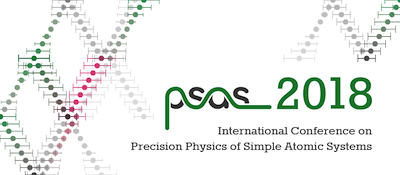Speaker
Description
Laser spectroscopy of atomic hydrogen is a source of valuable data for a least-square adjustment of fundamental constants and precise tests of QED. Further improvement of precision of those measurements is of key interests for a problem, known as a Proton Size Puzzle \cite{Antognini2013}. This work requires suppression of different systematic effects, including a Doppler shift. Cooling the atomic beams to cryogenic temperatures opens a possibility to decrease the velocities of atoms, reducing the uncertainty, caused by velocity distribution of the atoms.
We report about our experiment on two-photon spectroscopy of the transition 1s-3s in atomic hydrogen by frequency combs \cite{Yost2016}. For the excitation of atomic transition we use a mode-locked Ti:Sa laser with two frequency doubling stages. The excitation takes place in a beam of atomic hydrogen expanding in a vacuum chamber. To reduce a first-order Doppler effect we use a technique of two-photon spectroscopy in counter-propagating laser beams \cite{Baklanov1977}. Using a cryogenic nozzle, cooled down by liquid helium, helps us to decrease the velocity of atoms, improving systematic uncertainties in our experiment.
In the presentation we discuss main systematic effect which is presented in our experiment, namely the first-order Doppler shift caused by chirp of the laser pulses. We discuss modelling of this shift and model-independent approaches, allowing to eliminate this effect.

